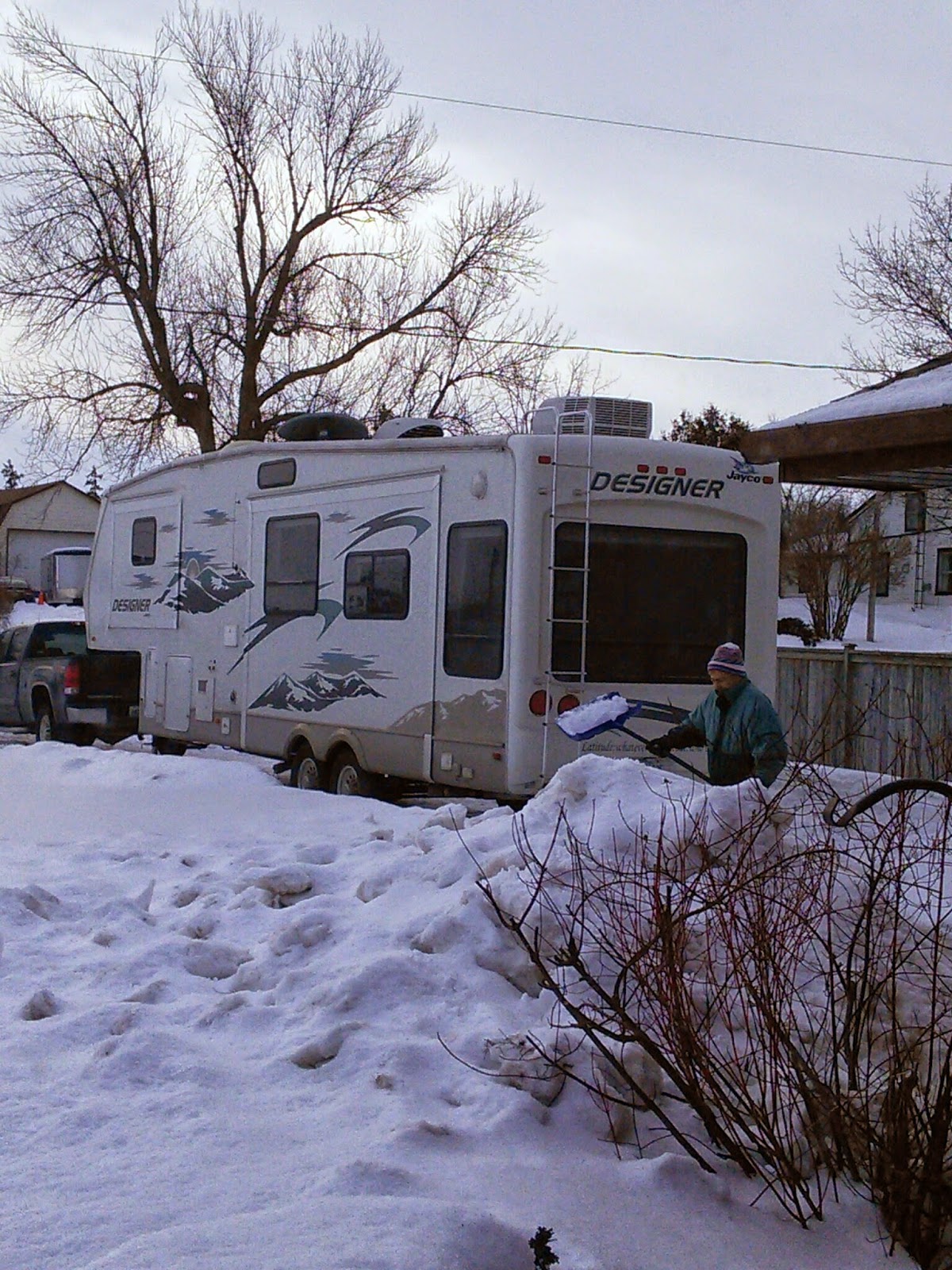Home to snow! Lots of it. Why do we leave so early in the fall causing us to have to come home in the middle of winter? Well, so we can see parts of the northwest too. Here are some highlights from the past six months: |
The fall colours in Grand Mesa, Colorado were spectacular. Locals said they were the best they've seen in many years. |
| The crystal, deep blue, pure waters of Crater Lake National Park in Oregon. |
Lava tube caves in Lava Beds National Monument in northern California. |
Massive sequoias, the biggest trees on earth, hidden in the mist in Kings Canyon and Sequoia National Parks. |
The California Central Coast was a delight to revisit. Not much has changed in the 33 years since we were last here. This is McWay Falls - behind me to my left the water falls over the cliff onto the sand. A rarity. |
Foggy mornings near the Kelso sand dunes in the Mojave National Preserve in California. |
The not-so-mysterious Racetrack in Death Valley National Park. Researchers have finally figured out how these rocks skim across the playa. |
Strangely eroded sandstone shapes at Little Finland near Whitney Pocket outside of Mesquite, Nevada, north of Las Vegas. |
Good times with good friends in Quartzsite, Arizona. |
Ridiculous hiking up walls and on the edge of cliffs at Picacho Peak State Park near Tucson, Arizona. |
Another ridiculous hike on narrow ledges gripping chain ropes at Angels Peak in Zion National Park, Utah. It's over 1,000 feet (305 meters) straight down to the valley floor below. I feel like I'm living an episode of Fear Factor! |
A fabulous day of boating with friends on Lake Havasu, Arizona. The London Bridge in Lake Havasu City behind me. |
So, our trip by the numbers:
| Total fuel costs (diesel for our truck): | $ 4,000 |
| Total miles traveled in six months: | 14,000 miles (22,500 kms) |
| Total camping costs: Remember, much of the time we camp for free | $ 1,300 Avg $ 7.30/day |
| Average Daily Cost of Trip: Excludes food since we eat when we're home anyway | $ 38.80 |
That's it for another year. Now to sit back, survive the rest of freezing cold winter, the cold, wet spring and hopefully a hot summer before we head out again next fall. Adios amigos!

























